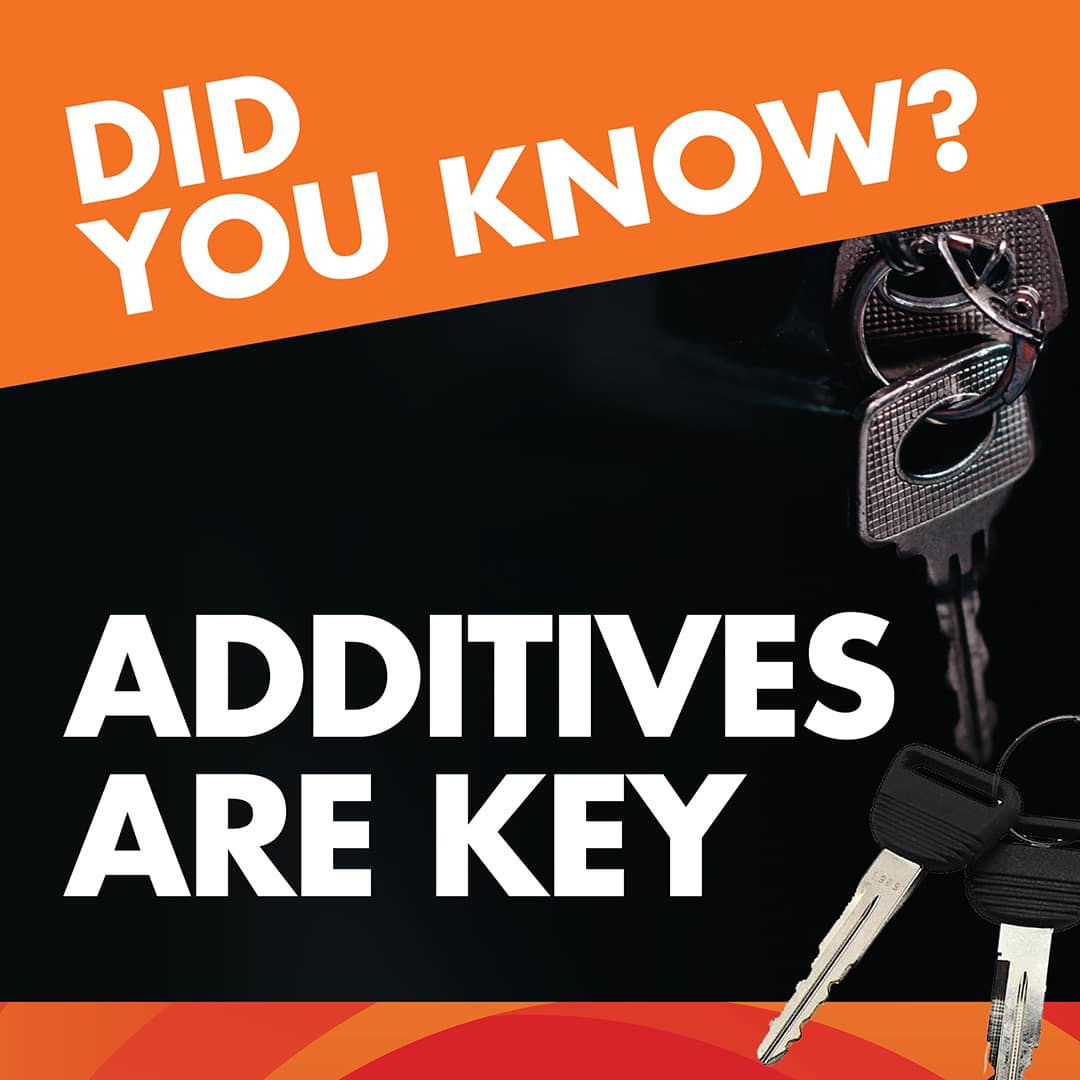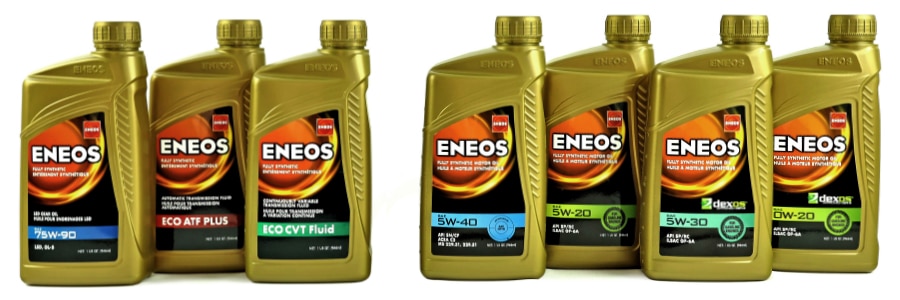Oil technology is not only represented by the advancements of synthetic oils in the base, but also in the additives that are carefully selected to provide enhanced benefits. Without these additives, the oil would become contaminated, leak, break down more easily, and fail to properly protect the engine components.
Although base is a critical component of vehicle lubricants, the product added to vehicles is not complete without additives, or “add-pacs,” as they are often known.

Here are many common additives and their role in a vehicle’s lubricants.
Viscosity Index Improvers
There are several types of additives that are essential to blending a high quality and robust oil, but the most important are Viscosity Index Improvers (VII). Viscosity is defined as a fluid’s resistance to flow, and higher viscosity is thick like honey where low viscosity is thinner like gasoline. Oil needs to protect the components in all conditions, from cold to hot and in between.
When it is cold, oil is thicker (or higher viscosity), and viscosity drops as oil warms up. For oil to work as it should during normal operating temperatures (around 200° F), it will naturally be much thicker at cold temperatures. Unfortunately, engines (and transmissions) are most susceptible to damage when they are first started, especially on chilly days.
As a result, vehicle manufacturers are moving to lower viscosity oils to help with engine protection at colder temps. But as oil warms up, it can become too thin, resulting in lack of protection during hot temperatures. This is especially true of lower viscosity oil.
To combat this, VIIs are added to vehicle lubricants, which raise the viscosity of motor oil as it warms up. That way, oil can be thin enough for cold-weather startup and also be the correct viscosity as your engine heats up.

Detergents
When non-detergent oils were standard, engines would get coated with sludge and other impurities. There was some debate about using oils containing detergents as they became available, but it was found the detergent would wash away deposits that were filling gaps between pistons, rings, and seals that led to leaks.
Today’s detergents help to reduce and/or prevent sludge buildup and neutralize other impurities produced by the combustion process. Oil detergents work similarly as in a clothes washing machine. During the wash cycle, impurities are held in suspension by the detergent and then flushed out during the drain cycle. In the engine, impurities are held in suspension until the recommended oil service drain interval.

Corrosion Inhibitors
As engines constantly change temperatures, moisture builds up and leads to rust. To reduce this occurrence, corrosion inhibitors are added to slow down the process.
Antioxidants
Because Oil degrades with time due to exposure to oxidants, it is necessary to use an antioxidant to preserve its integrity as long as possible.
Aside from oil additives themselves, there are related considerations.
Oil Change Intervals
Additives play an extremely important role in protecting your engine, and it’s important to use an oil with an expert blend of high quality base oil and select additives, such as ENEOS. Unfortunately, high quality oil only provides optimal protection for a certain amount of time and must be changed at intervals depending on your particular driving conditions.
It is important to note that most, if not all, factory recommended intervals are based on driving conditions that we rarely experience. When your vehicle’s regular operation consists of city stop-and-go driving, congested freeways, or towing trailers or equipment, its oil should be changed more frequently than outlined in the vehicle’s owner’s manual.
Additives also have a lifespan, so the quality of base oil, as well as the quality of the additive package, is important in ensuring that your engine is better protected between oil changes.
Aftermarket Additives
Putting an independent oil additive into the engine changes the formulation of the oil in unknown ways. Blends like those used by ENEOS are carefully structured to consider the specifications of all properties in the oil and the engine.
In some cases, adding an aftermarket additive can shift the oil viscosity outside the required range for the engine, which can lead to mechanical problems. There are other additives that contain chlorine which, when combined with moisture, develop a corrosive byproduct.
If a top premium quality oil such as ENEOS is used, and changed religiously, the need for aftermarket additives is alleviated.

What's the Equation?
To “sum up” additives, our R&D background and relationship with vehicle OEMs allows ENEOS to address all vehicle specifications for which our products should be used, creating the proper formulations of quality base oils and additives. ENEOS produces lubricants that are best in horsepower, cleanliness and fuel economy which meet or exceed manufacturer specifications.
